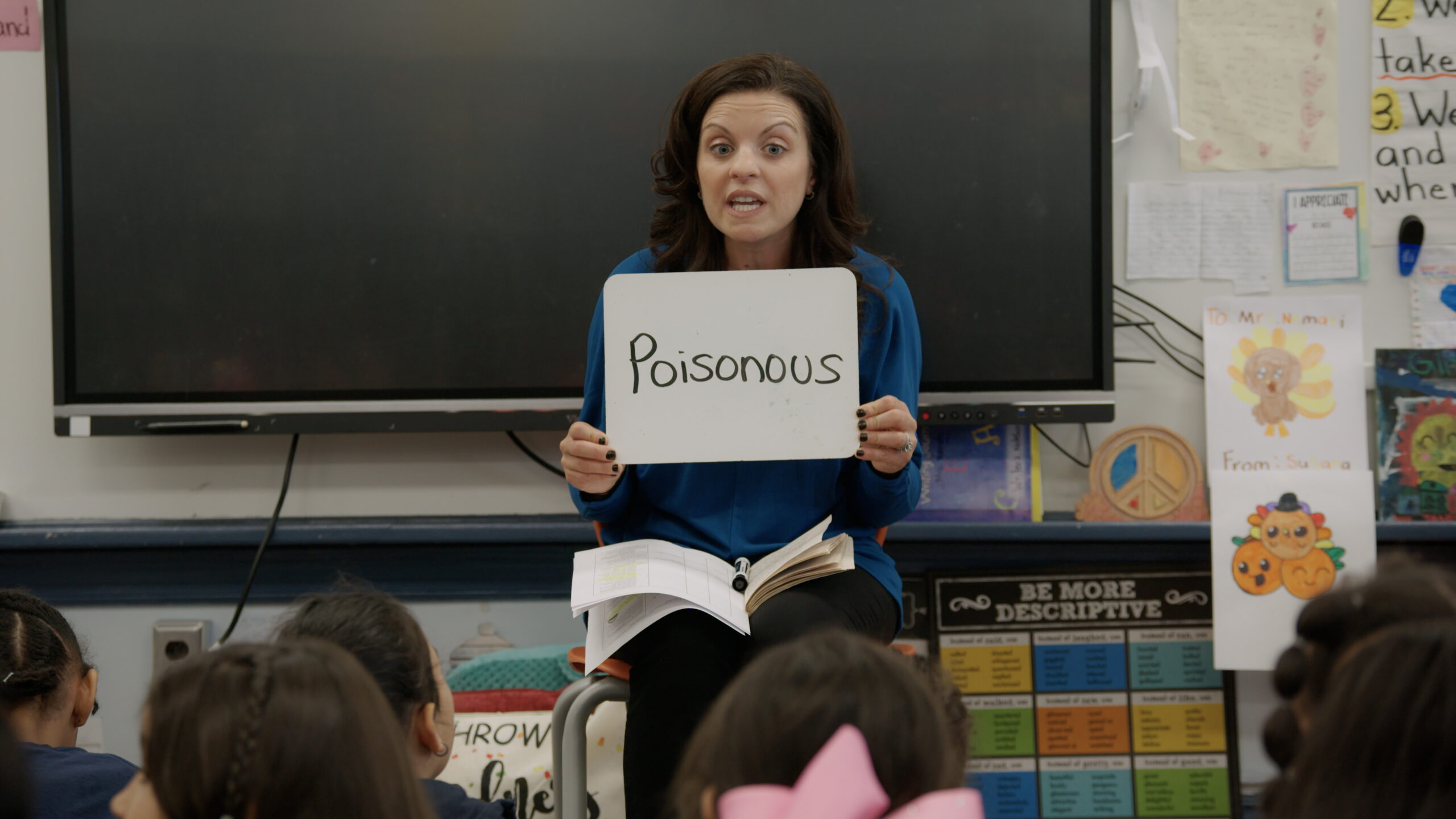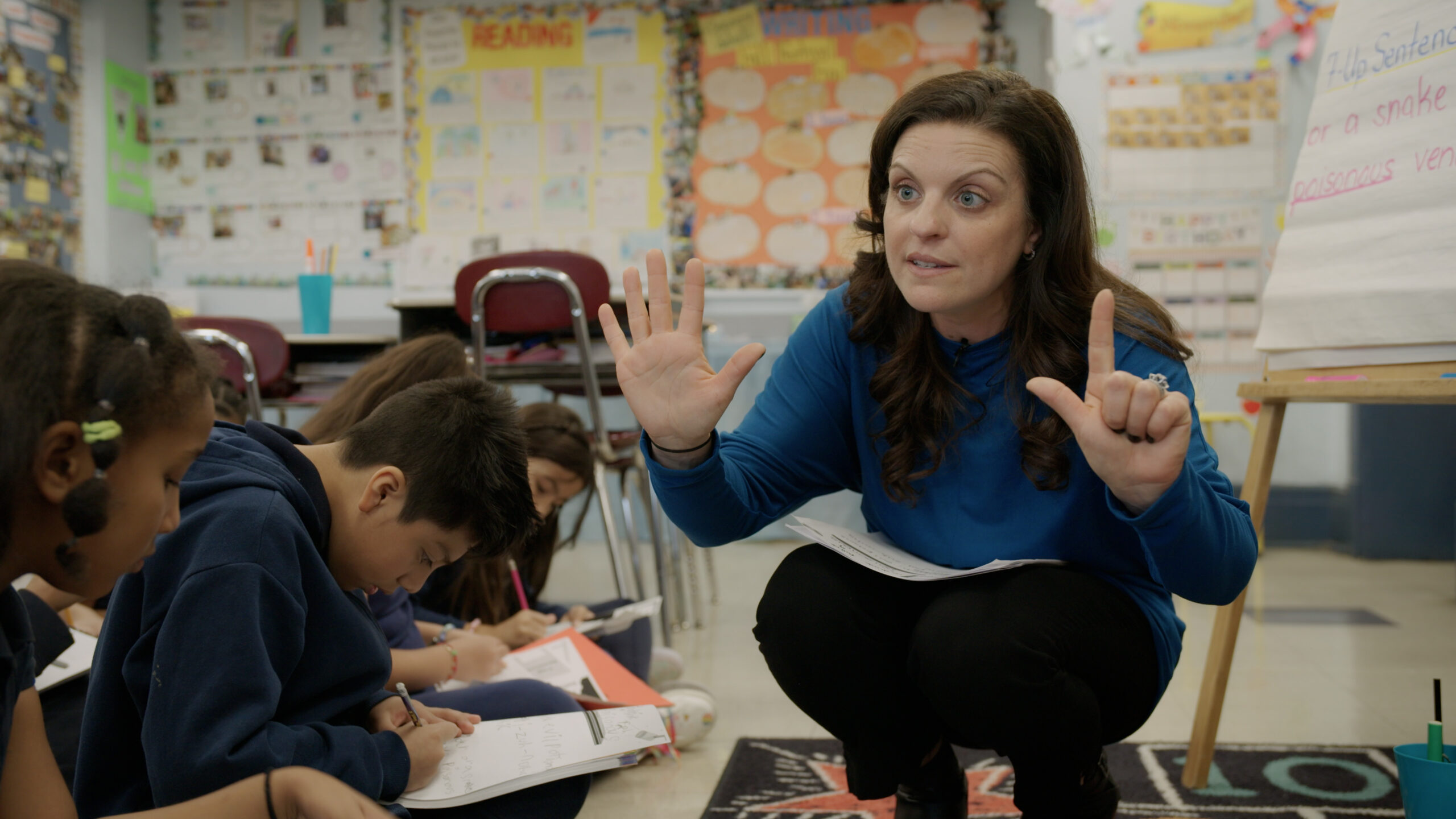Vocabulary-Enriched Messages: Using Word Maps
Overview
The teacher embeds vocabulary into the morning message that considers students’ social, emotional, and academic needs and connects to their current reading unit. The teacher pauses to provide brief, student-friendly definitions to bolded, pre-identified words to support understanding of the message. Re-reading the messages for fluency and expression builds fluency, while extension activities, such as using a graphic organizer, reinforce reading foundational skills.
Key Take-aways
• Utilizing graphic organizers such as word and definition maps has a high effect size on supporting student learning of literacy concepts.
• Opportunities for practicing decoding, breaking down words, and discussing word meaning can be infused into all parts of the instructional day.
• Support individual student needs by providing scaffolds such as sentence starters and alternative ways for expressing learning such as drawing, while providing extension opportunities for students that are ready such as applying new words to other contexts or subject areas.
Transcript
Dr. Ken Kunz: In this video, you will observe third-grade teacher Mrs. Namati, using her daily message. Time to reinforce tier two vocabulary from a recent read-aloud. Students use the work time as an opportunity to discuss recent content and language arts and to reread for fluency.
Teacher: Welcome to another day of third grade. We’re going to read our vocabulary message together. But it is really long today, so, we’re going to take it step by step. Okay, let’s read it together. It says,
Student(s): Dear inquisitive third grade, boys and girls.
Teacher: You’ll see that inquisitive is highlighted in bold print. That word means curious. Can everybody say curious?
Student(s): Curious.
Teacher: Can we clap out the syllables four inquisitive? Ready?
Student(s): In/quis/i/tive.
Teacher: Good. How many syllables?
Student(s): Four.
Teacher: Four. Good job, Scarlet. Okay, ready? Here we go.
Student(s): Information readers become experts.
Dr. Ken Kunz: Ms. Namati intentionally crafts a message in a friendly letter format to communicate a focus for learning with her third graders. In this multi-paragraph format, students are exposed to complex text and even lengthier text that helps students to build stamina.
Student(s): Today, I want to revisit my favorite chapter from the book, Shark Lady. And I think it’ll resonate with your expert status.
Teacher: There’s another word in bold print. Resonate means to connect. Okay, so we’re going to connect our knowledge with Shark Lady. Okay, can we clap out resonates?
Student(s): Res/on/ates
Teacher: Good. How many?
Student(s): Three.
Teacher: Three. Good job.
Student(s): Do you remember trouble with Grandma? This chapter stands out and here’s why. It is where we get to see their amazing adventurous spirit.
Teacher: On your desk, you have your Frayer model. Okay? We are going to practice it using the word inquisitive. So, can everybody take this word inquisitive and write it in the circle right here. It’s the very first word we talked about. Okay? Once you write inquisitive in the middle of your model, who remembers what we do next? Where do we go next? Lyn?
Student(s): You go to the first box.
Teacher: You go to the first box that says definition. That means what the word means, right? So we try to put it in simple terms for us to understand. Who remembers what I told you? What does inquisitive mean? What does it mean? Scarlet?
Student(s): Inquisitive means curious.
Teacher: Inquisitive means curious. So all you have to do under definition is you are going to write the word curious. Okay? I wrote a big so you could kind of see it. Okay. Curious. Okay. Who remembers what we put under facts and characteristics? How would we describe being curious? What do you think that means when you’re curious about something?
Student(s): Wondering about something.
Teacher: Oh, Wondering about something. I love that. So, under facts and characteristics, I want you to write these little points that we talked about. Okay? Somebody even said, thinking. So we can, we can write that too. When you’re doing an example for inquisitive, I want you to try to think what inquisitive means. We know that inquisitive means curious, and we know that it also means wondering about something, asking a lot of questions and thinking. So I want you to draw a picture that shows that maybe you want to draw a person with a lot of questions around them, okay? Or somebody thinking about something. Okay? Let’s draw your picture. Excellent drawing. Oh, what do you have there? Gabriela? Thinking about something. Yes. Very nice. You are touching your head and thinking about something, right? Very nice. So what does it mean? Okay, she’s curious about it, right? The last section says a non-example. Non-example is the opposite of what an example is. So all of your examples showed either you or the characters being curious about something. Thinking. So, I want you to turn and talk to somebody at your table sitting next to you about what you think a non-example could be.
Student(s): I think what’s gonna happen next is that she is curious.
Student(s): No.
Student(s): What do you think a non-example is from Shark Lady? An example is that you’re curious. What would be a…
Teacher: Who can tell me what you and your partner came up with? What is a non-example for the word Inquisitive? What do you think
Student(s): When someone knows the answer.
Teacher: Maybe a non-example can be somebody who always knows the answer, right? Very good. Lorenzo.
Student(s): Someone who knows everything and does not think about it and already knows everything.
Teacher: Okay. Very good. So maybe somebody who doesn’t ask a lot of questions, right? What do you think we can draw for a non-example? What would our picture look like?
Teacher: Everyone is raising their hand and like, and, and like one person is not raising their hand and they’re not other, they’re not curious or infinitive.
Student(s): So I want everybody right now to draw a picture of somebody who’s not inquisitive, somebody who’s not being curious. Go ahead and put your non-example right there.
Teacher: There’s the book. I already know what happens.
Student(s): somebody who throws the book because they don’t even want to be inquisitive and ask questions about what’s happening inside of it, right? Beautiful. Elias, can you explain your picture?
Student(s): My picture is like if somebody’s sleeping in a class.
Teacher: And they should be reading their book. Is that a book right there?
Student(s): Yeah. They got in trouble.
Teacher: Oh, they got in trouble for not reading it. So they’re sleeping, so they’re not inquisitive. They’re not curious, right? Excellent job.
Student(s): Somebody that already knows, but it’s like a spoiler.
Teacher: Oh, somebody who’s spoiling it for everybody else. Excellent. Oh, this is a great example. Everyone in the class is raising their hand, and this one’s sleeping, right? He’s not inquisitive. Good job.


